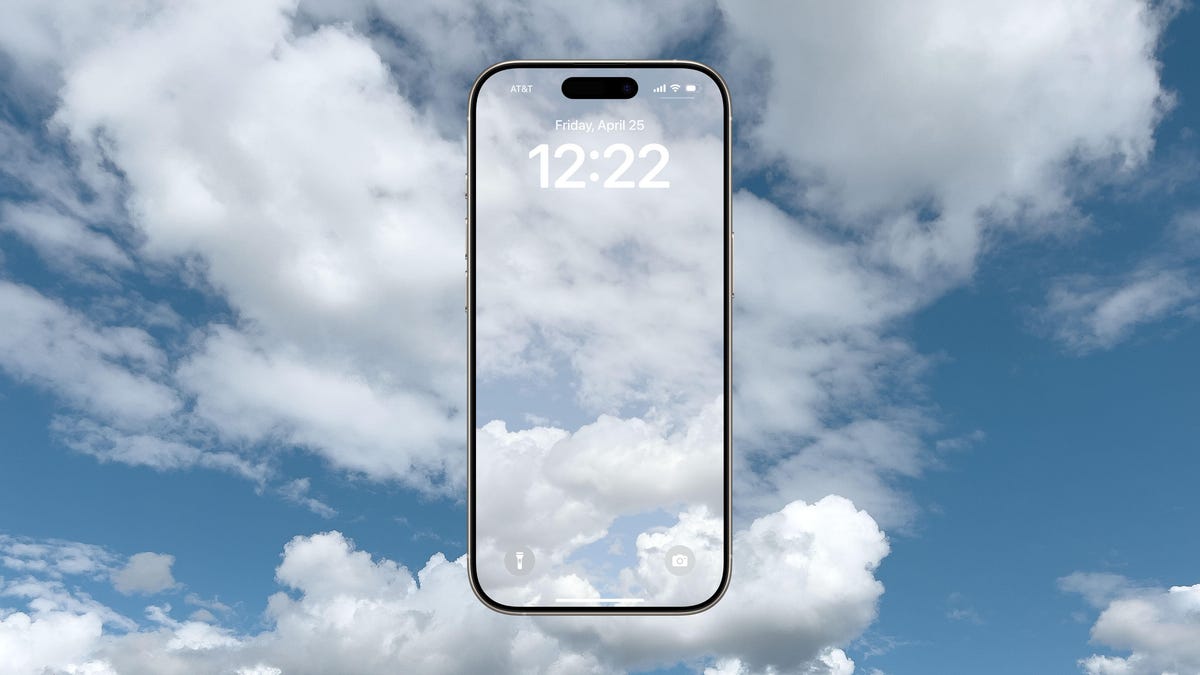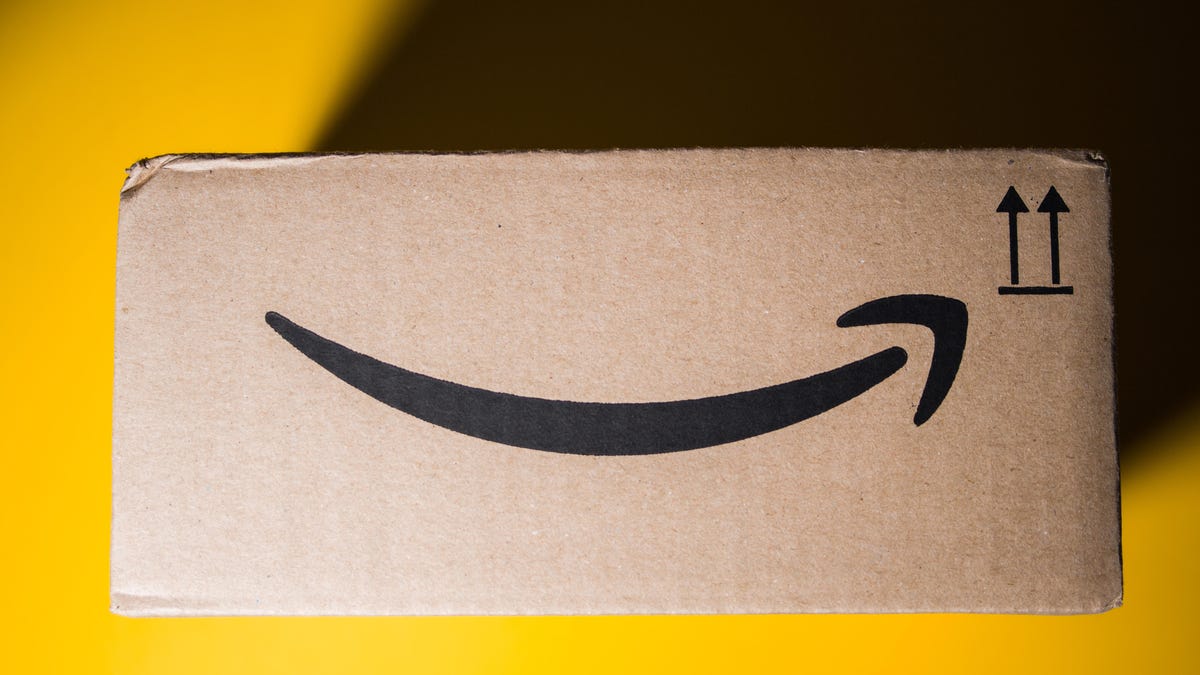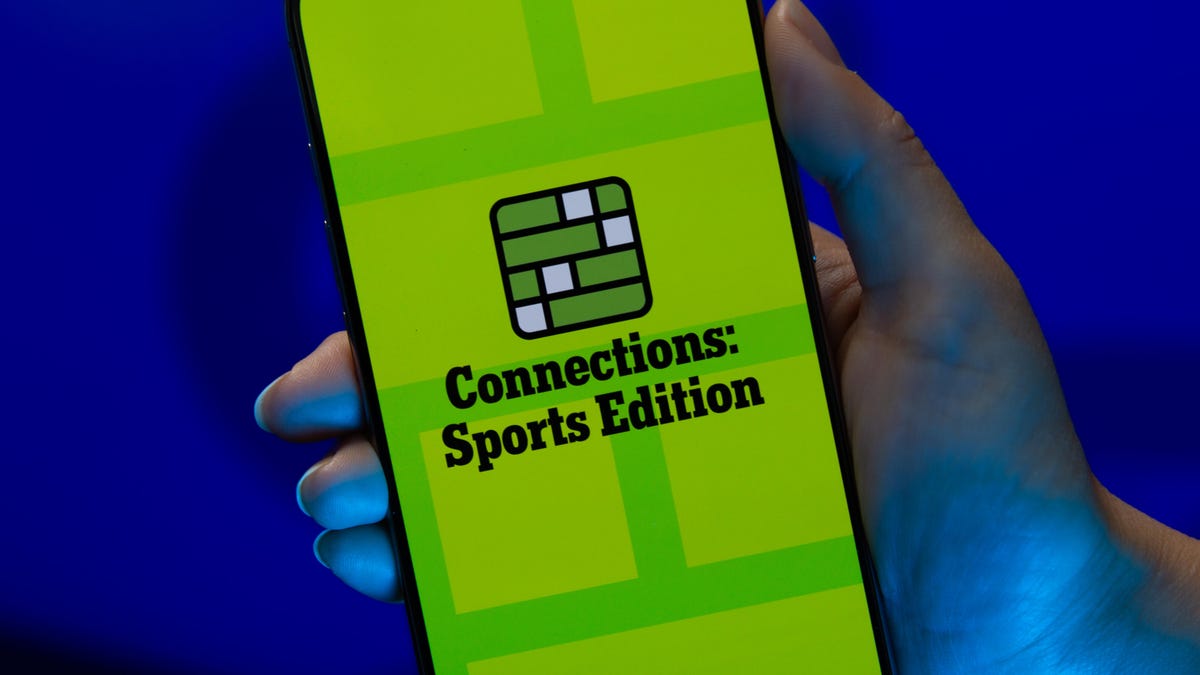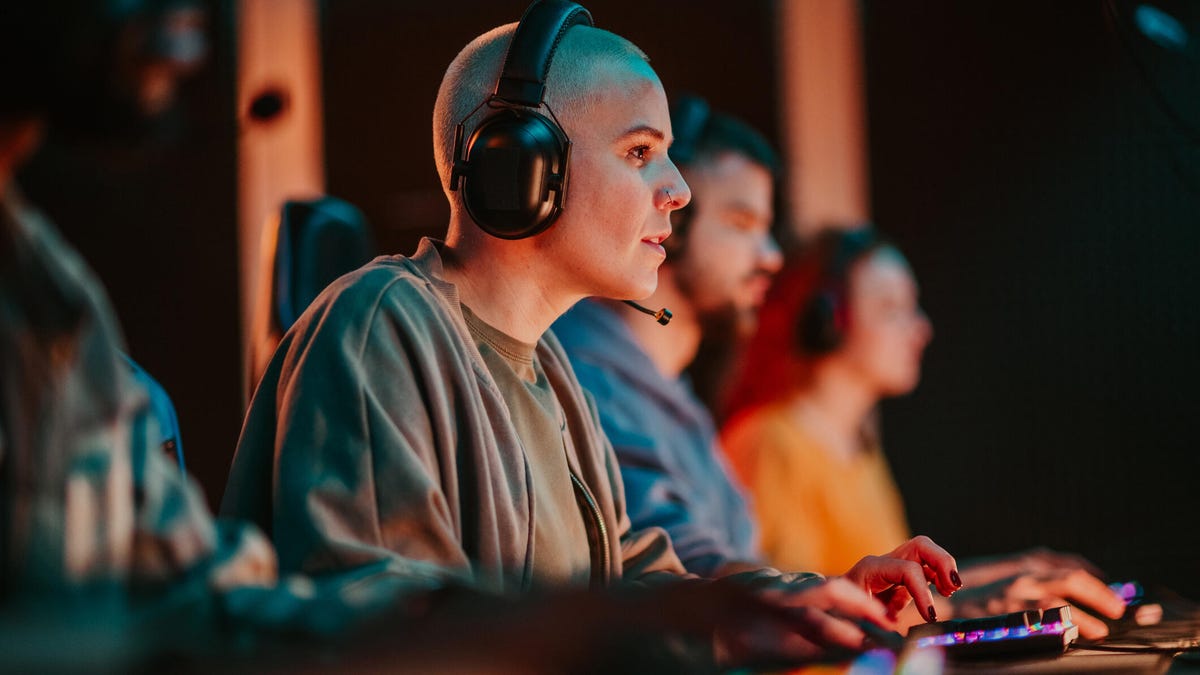Technologies
iPhone 17 Colors: A Surprising Hue Could Be Coming for Pro Models
Rumors about the iPhone 17 colors continue to pour in, but the latest leak isn’t one I saw coming.

The rumored iPhone 17 color lineup includes a shocking twist for the iPhone 17 Pro models.
Last week, a Korean blogger named yeux1122 published two images of camera covers that could be the full lineup from iPhone 17 base model and the rumored iPhone 17 Air, and leaker Majin Bu posted that the rumored Sky Blue color would be scrapped for the Pro models. And now, another leaker has posted this week the possible color lineup for the iPhone 17 Pro and Pro Max. We’ll get to the surprise in that photo below.
We’ve already heard plenty of rumors that the iPhone 17 base model could come in purple, green and blue. Two to three other familiar colors are now said to be included in the options — totaling five (or maybe six) possibilities for the base model. The rumored iPhone 17 Air could come in four, while the Pro and Pro Max are expected to have five.
The rumored iPhone 17 is likely to drop in September. As the month draws closer, we’re hearing plenty of rumors and leaks, but we’re still playing the guessing game. Here’s what we’re hearing about possible iPhone 17 colors.
The rumored full color lineup
Here’s the full lineup for the rumored iPhone 17 base and Air models, according to Sonny Dickson, a consumer tech reviewer, who shared an image on X on Monday:
iPhone 17 lens protection cover will match the phone color. The orange one for the Pro Max might hint at a new shade, possibly dark gold or copper. pic.twitter.com/BMamZ45now
— Sonny Dickson (@SonnyDickson) July 14, 2025
The iPhone 17 base model could come in these colors:
- Black
- Gray
- Silver
- Light blue
- Light green
- Light purple
The iPhone 17 Air could be released in these colors:
- Black
- Blue gray
- Light gold
- Silver
The iPhone 17 Pro and Pro Max could come in these colors:
- Black
- Gray
- Silver
- Dark blue
- Orange
Yeux1122 has a similar lineup in their post, but the base options don’t include gray.
Black and silver aren’t surprising since we’ve seen both neutral colors in earlier iPhone models and generations. However, if you use a colored phone cover instead, like I do, this possibility could be welcome.
The iPhone color I didn’t see coming
Purple, blue and green are all part of the same color palette. The neutral colors don’t quite surprise me since they’re standard for iPhones at this point. But the color orange is shocking. Dickson expects that the color will only be for the Pro and Pro Max models.
Dickson also noted the orange shade may end up being a dark gold or copper.
Sky blue could be old to Apple, but a new iPhone hue
The early rumored color for the iPhone 17 was sky blue.
Well-known leaker Majin Bu posted the rumor of the new color on their blog, calling it «a refined, bright, and modern shade.» But why sky blue?
Perhaps because the latest M4 MacBook Air currently comes in sky blue, an iPhone in the same color could be an aesthetic win for sky blue MacBook owners.
Bu initially wrote that the sky blue color could be for the iPhone 17 Pro, but recently scrapped that rumor to say sky blue would be for the iPhone 17 Air.
It seems like there’s a possibility for different shades of blue, as we see in the lineup above. Rumor has it that there could be a blue option for the iPhone 17 base model and a dark blue for the iPhone 17 Pro. But based on Bu’s post, there’s a possibility of the iPhone 17 Air getting a sky blue hue. We’ll have to wait and see which — if any — blues will be available for iPhone 17.
The possibility of purple
Bu posted on X and their blog on June 20 that Apple is testing purple and green, but that purple could be another new color for the iPhone 17’s base models.
iPhone 17: Purple and Green Colors in Testing as Potential New Shade for 2025
Full Article:https://t.co/jZJJoUHBsf pic.twitter.com/1in8R6dDa5— Majin Bu (@MajinBuOfficial) June 20, 2025
Bu said that purple could meet Apple’s rumored demand for more personalization while blending into Apple’s ecosystem for its other products.
If green is added to the iPhone 17 lineup, Bu says it could be a «fresh and natural tone, ideal for a minimalist yet striking aesthetic.» Yeux1122 and Dickinson included both purple and green in their rumored lineups this month.
Could an aluminum iPhone design bring more colors?
The iPhone 16 Pro and Pro Max have a titanium frame, but analyst Jeff Pu predicted that the iPhone 17 could usher in the return of the aluminum frame for both the Pro and baseline models, as we’ve seen with earlier versions like the iPhone 14 lineup. Considering the iPhone 16 Pro and Pro Max’s colors are based on titanium, it raises the question: Will an aluminum frame mean new colors?
The one phone in the iPhone 17 lineup that could have a titanium frame is the rumored slimmer iPhone 17 Air, according to Pu. We’ll have to wait and see what Apple decides.
Read more: WWDC Bored Me. I Need Apple’s iPhone 17 Launch to Make a Splash
A look at past iPhone colors
Apple likes to release both new and familiar colors for every new iPhone release.
Usually, we see more color variations for the basic models, and more neutral colors for the Pro and Pro Max iPhone models. For instance:
The iPhone 14 came in six colors: midnight, starlight, red, blue, purple and yellow. However, the iPhone 14 Pro and Pro Max models only came in black, silver gold and deep purple. The same is true for the 15 model phones, but Apple offered one fewer color for its base model.
iPhone 15 models were available in pink, yellow, green, blue and black, while Pro and Pro Max models arrived in more neutral tones like white, blue, black and natural titanium.
The iPhone 16 Pro and Pro Max colors didn’t change from the iPhone 15 Pro and Pro Max. However, the other iPhone 16 models were available in ultramarine, teal, pink, white and black.
How many new colors we may see from the rumored iPhone 17 is still unclear, but as of now, a sky blue option could well be in your future.
Technologies
If You Were ‘Tricked’ Into an Amazon Prime Subscription, You Should Have Been Paid by Today
Amazon is paying $1.5 billion to people who mistakenly subscribed to Prime, and the first round of payments are due today.

Amazon Prime provides a lot of valuable benefits to its members, but the company’s registration practices for its premium subscription from 2019 to 2025 led to many customers accidentally subscribing to a service they didn’t want.
Amazon is now paying the price for that deception — the US Federal Trade Commission levied a massive $2.5 billion settlement on the company for its subscription tactics.
The majority of the settlement — $1.5 billion — has been earmarked to refund eligible subscribers, with the rest serving as a civil penalty. Amazon is also now legally required to provide a clear, obvious option to decline Prime, making it as easy to leave the service as it is to join.
Amazon isn’t admitting to shady behavior. «Amazon and our executives have always followed the law, and this settlement allows us to move forward and focus on innovating for customers,» Mark Blafkin, Amazon senior manager, said in a statement. «We work incredibly hard to make it clear and simple for customers to both sign up or cancel their Prime membership, and to offer substantial value for our many millions of loyal Prime members around the world.»
The online retail giant started sending out payments to eligible people in November and was supposed to conclude its initial automatic payments today, Dec. 24. Read on to learn more about Amazon’s settlement and what to do if you think you’re eligible for compensation but didn’t receive a payment.
Why did the FTC fine Amazon?
The FTC filed suit against Amazon, accusing the company of using «dark patterns» to nudge people into Prime subscriptions and then making it too hard to cancel. The FTC maintained Amazon was in violation of Section 5 of the FTC Act and the Restore Online Shoppers’ Confidence Act.
«Specifically, Amazon used manipulative, coercive or deceptive user-interface designs known as ‘dark patterns’ to trick consumers into enrolling in automatically renewing Prime subscriptions,» the FTC complaint stated.
Who’s eligible for Amazon’s payout?
Amazon’s legal settlement is limited to customers who enrolled in Amazon Prime between June 23, 2019, and June 23, 2025. It’s also restricted to customers who subscribed to Prime using a «challenged enrollment flow» or who enrolled in Prime through any method but were unsuccessful in canceling their memberships.
The FTC called out specific enrollment pages, including Prime Video enrollment, the Universal Prime Decision page, the Shipping Option Select page and the Single Page Checkout. To qualify for a payout, claimants must also not have used more than 10 Amazon Prime benefits in any 12-month period.
Customers who signed up via those challenged processes and did not use more than three Prime benefits within one year will be paid automatically by Amazon within 90 days. Other eligible Amazon customers will need to file a claim, and Amazon is required to send notices to those people within 30 days of making its automatic payments.
If you are eligible for the automatic payment, you should have received an email from Amazon by today explaining how to claim the money. You can be paid via PayPal or Venmo. If you prefer a paper check, don’t accept the digital payment. The FTC says Amazon will mail you a check that you must cash within 60 days.
How big will the Amazon payments be?
Payouts to eligible Amazon claimants will be limited to a maximum of $51. That amount could be reduced depending on the number of Amazon Prime benefits you used while subscribed to the service. Those benefits include free two-day shipping, watching shows or movies on Prime Video or Whole Foods grocery discounts.
Customers who qualify for the payments should have received them from Nov. 12 to Dec. 24, 2025.If you are eligible for compensation from Amazon but didn’t receive a payout, you’ll need to file a claim after Amazon starts the claim process. The FTC says it will update its Amazon settlement site once that process has begun.
Customers who did not use a challenged sign-up process but instead were unable to cancel their Prime memberships will also need to file claims for payment.
Technologies
Today’s NYT Connections: Sports Edition Hints and Answers for Dec. 25, #458
Here are hints and the answers for the NYT Connections: Sports Edition puzzle for Dec. 25, No. 458.

Looking for the most recent regular Connections answers? Click here for today’s Connections hints, as well as our daily answers and hints for The New York Times Mini Crossword, Wordle and Strands puzzles.
Today’s Connections: Sports Edition has a real mix of categories, including one that’s all about a certain famous athlete. If you’re struggling with today’s puzzle but still want to solve it, read on for hints and the answers.
Connections: Sports Edition is published by The Athletic, the subscription-based sports journalism site owned by The Times. It doesn’t appear in the NYT Games app, but it does in The Athletic’s app. Or you can play it for free online.
Read more: NYT Connections: Sports Edition Puzzle Comes Out of Beta
Hints for today’s Connections: Sports Edition groups
Here are four hints for the groupings in today’s Connections: Sports Edition puzzle, ranked from the easiest yellow group to the tough (and sometimes bizarre) purple group.
Yellow group hint: Swing away!
Green group hint: What’s that on your bat?
Blue group hint: Catch the football.
Purple group hint: Lake Placid or Lillehammer.
Answers for today’s Connections: Sports Edition groups
Yellow group: Baseball bat materials.
Green group: Associated with George Brett.
Blue group: NFL rookie WRs.
Purple group: Olympic ____.
Read more: Wordle Cheat Sheet: Here Are the Most Popular Letters Used in English Words
What are today’s Connections: Sports Edition answers?
The yellow words in today’s Connections
The theme is baseball bat materials. The four answers are aluminum, ash, birch and maple.
The green words in today’s Connections
The theme is associated with George Brett. The four answers are 5, pine tar, Royals and third base.
The blue words in today’s Connections
The theme is NFL rookie WRs. The four answers are Burden, Egbuka, Golden and McMillan.
The purple words in today’s Connections
The theme is Olympic ____. The four answers are Games, rings, torch and village.
Don’t miss any of our unbiased tech content and lab-based reviews. Add CNET as a preferred Google source.
Technologies
Christmas Eve Gaming Crushed as Steam Goes Offline
Services related to the popular game hub seem to slowly be returning as of Wednesday afternoon.

Your Christmas Eve gaming session might not go as planned. Online gaming hub Steam went down on Wednesday. As of about 1:30 pm PT, the Steam store page was once again accessible, so services seemed to be coming back online.
The Steam outage appeared to begin mid-afternoon ET, according to Downdetector, which monitors site outages. (Disclosure: Downdetector is owned by the same parent company as CNET, Ziff Davis.)
A representative for Steam did not immediately respond to a request for comment.
As of Wednesday noon PT, Steam’s official X and Bluesky accounts hadn’t posted anything about the outage.
Gamers certainly noticed. «Steam down, Steam down!!!» wrote one Bluesky user.
Others commented on the bad timing just as gamers were enjoying time off or receiving gaming gifts. «‘You got a gift on Steam!’ oh cool ‘Steam is down’ oh cool,» wrote another Bluesky user.
-

 Technologies3 года ago
Technologies3 года agoTech Companies Need to Be Held Accountable for Security, Experts Say
-

 Technologies3 года ago
Technologies3 года agoBest Handheld Game Console in 2023
-

 Technologies3 года ago
Technologies3 года agoTighten Up Your VR Game With the Best Head Straps for Quest 2
-

 Technologies4 года ago
Technologies4 года agoBlack Friday 2021: The best deals on TVs, headphones, kitchenware, and more
-

 Technologies4 года ago
Technologies4 года agoVerum, Wickr and Threema: next generation secured messengers
-

 Technologies4 года ago
Technologies4 года agoGoogle to require vaccinations as Silicon Valley rethinks return-to-office policies
-

 Technologies4 года ago
Technologies4 года agoOlivia Harlan Dekker for Verum Messenger
-

 Technologies4 года ago
Technologies4 года agoiPhone 13 event: How to watch Apple’s big announcement tomorrow
